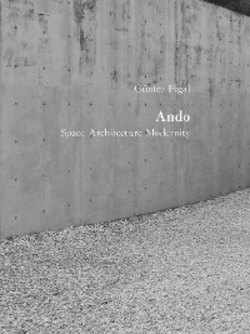Читать книгу Günter Figal - Ando - Günter Figal - Страница 5
Preliminary Note
ОглавлениеThis book is the result of perceptual contemplation – more precisely, of exploring Tadao Ando’s buildings during a lengthy stay in Japan, in the fall and winter of 2016 / 17. Initial ideas and phrases arose from viewing the photographs I had taken of Ando’s buildings, and also of temples and temple gardens in Kyoto, Nara, and Uji. To this extent, the photographs included in this book are not mere illustrations. Rather, they form a text preceding the written text – an initial structuring and fixation of visual experience that initiated conceptual reflection and description. Furthermore, the perceptual photographic and descriptive contemplation of Ando’s architecture has motivated me to take up and rethink questions that have been important to me for a long time. So I have learned from Ando’s buildings how the question of space could be related to the question of how to conceive the essence of modernity. The buildings answered these questions, and I had nothing to do other than understand the answer.
It is with great pleasure that I wish to express my gratitude to those who have contributed to the genesis of the book. First of all and as always, I am grateful to my wife, Antonia Egel. As in everything, here, too, we shared experience and reflection. Many others opened doors or made helpful suggestions, and thus improved the clarity of my ideas, or supported me otherwise. I would like to mention by name Hiroshi Asami, director of the Nishida Kitarô Museum of Philosophy; Toshihiko Hosotani, manager at Yumebutai Westin Hotel; Hans Peter Liederbach, who critically revised my text and attended to the correct writing of Japanese names; Mari Moh; Toshitaka Mochizuki; Keichi Nakano; Ichirô Nakata, director of Kanazu Elementary School; Ryosuke Ohashi; Kenichi Oishi, parish priest at Ibaraki Kasugaoka Church (Church of the Light); abbot Soen Ozeki, who allowed me to take pictures in the garden of his temple, Daisen-in, and to include a photograph of the ‘Ocean of Emptiness’ in this book; Bernhard Strauss, without whom my photographs would not have found the way from data files to prints; Dieter Weber, who designed this book and took it under his wing as publisher; and, finally, the Yamaguchi family, who allowed me to visit their tea house and take pictures. I am extraordinarily grateful to Tadao Ando for inviting us to his studio and, despite being in the midst of intense activity, took the time to engage in a wonderful conversation with us. However, it was Hideki Mine, our host at Kwansei Gakuin University, who propelled and made this book possible. Together we explored most of the buildings featured here. This book is dedicated to him in deep gratitude and friendship.
The English version of the book is not a direct translation. Though I kept it close to the German text, I felt free to diverge whenever I thought it fitting for the consistency and clarity of the English version. I am very grateful to Elizabeth Wener for the careful revision of my English text.
